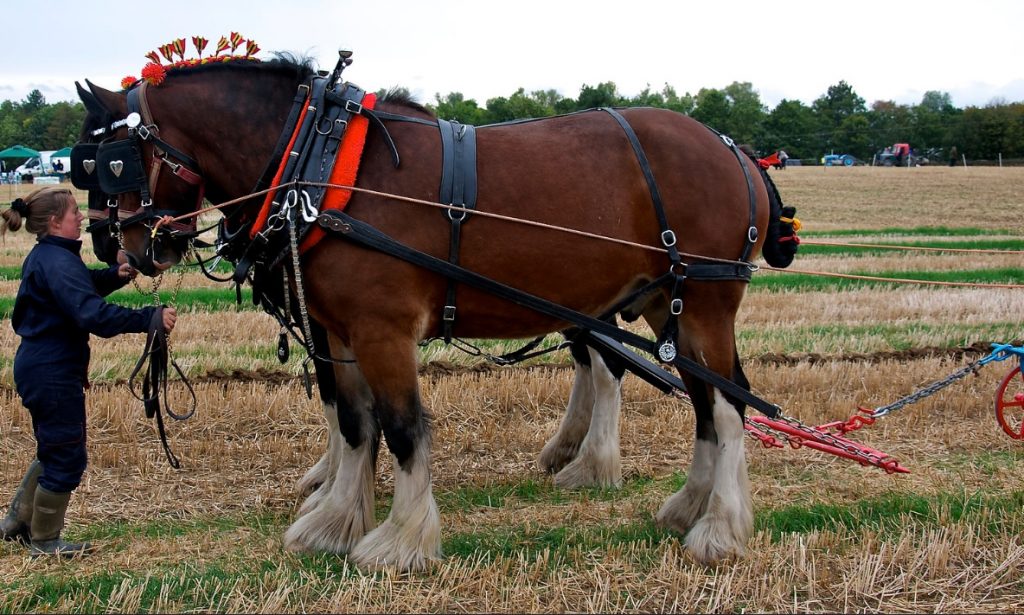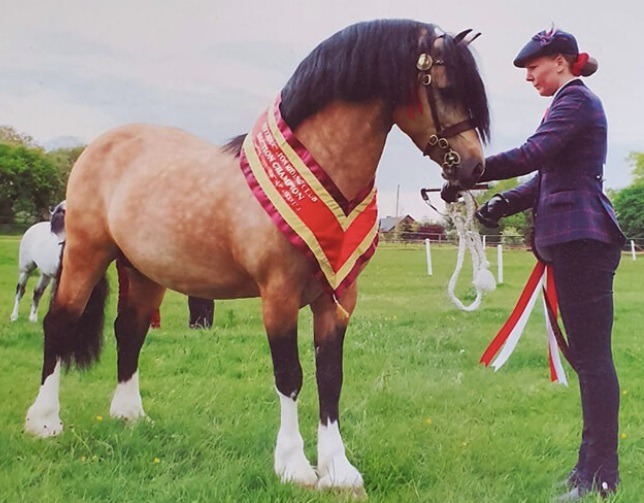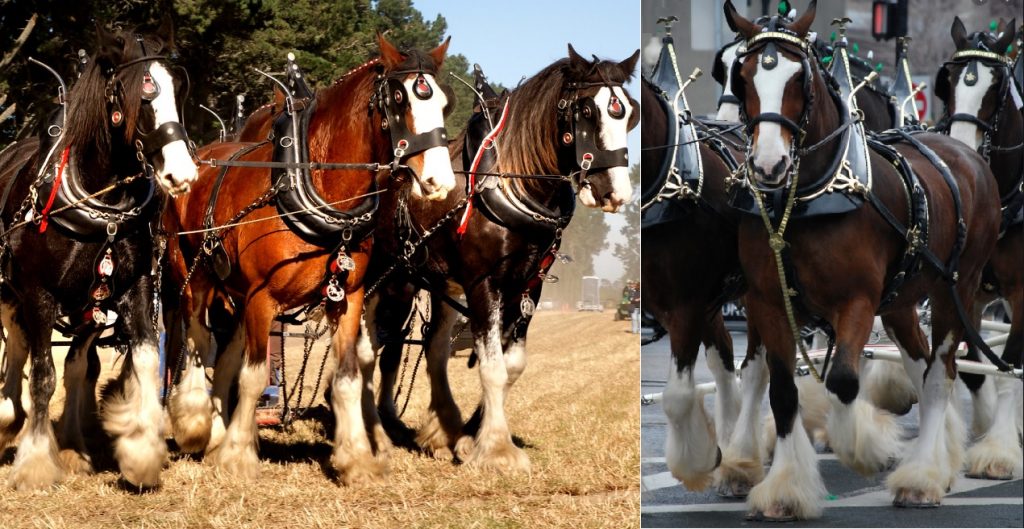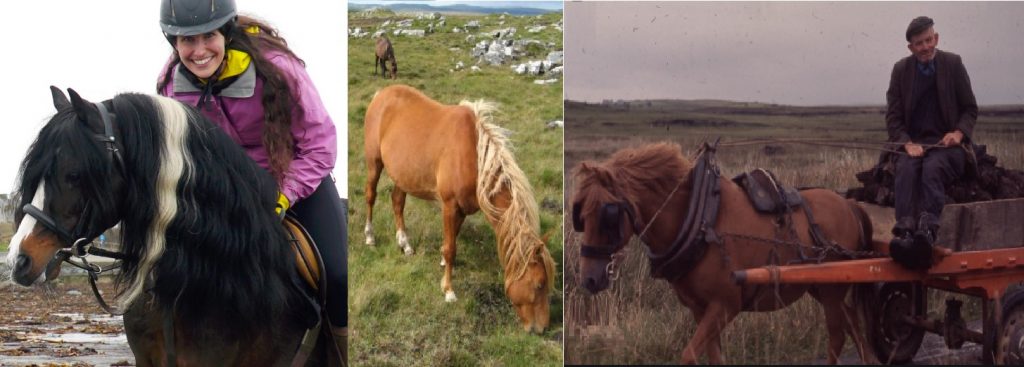The British Isles are home to a rich equestrian heritage, renowned for their breeds of horses, often referred to as “gentle giants.” These majestic creatures have been an integral part of British culture for centuries, embodying strength, grace, and an amiable disposition that has endeared them to horse enthusiasts worldwide. From the stately Shire horse, known for its impressive size and power, to the versatile Clydesdale, famous for its striking appearance and hardworking nature, British horses are a testament to careful breeding and enduring tradition.
In my opinion, British horses are unique not just because of their physical attributes but also because of the deep connection they share with the people and history of the region. The Shire horse, for instance, stands as a testament to the traditional British values of hard work and perseverance. Their imposing size and strength, once essential for agricultural work and transportation, contrast beautifully with their calm and friendly nature, making them gentle giants. This duality of power and gentleness encapsulates the spirit of British horses, earning them a revered status among horse breeds.
A Historical Bond
The relationship between the British people and their horses dates back centuries. Horses have been integral to various aspects of life, from farming to warfare. The Shire horse, one of the oldest British breeds, was used to carry knights in full armor in the medieval period. Their strength was indispensable in agriculture, where they plowed fields and transported goods, shaping the rural economy. Over time, while the need for such labor-intensive work diminished, the admiration and respect for these horses persisted, ensuring their preservation and continued breeding.
The elegance of the British Thoroughbred is another example of the nation’s equine legacy. Bred for speed and agility, Thoroughbreds have dominated the horse racing world for centuries. The origins of these horses can be traced back to the late 17th and early 18th centuries, with a focus on developing a horse that was not only fast but also resilient and intelligent. Today, the British racing industry remains a prestigious and vibrant part of the country’s culture, with events like the Royal Ascot capturing the imagination of horse enthusiasts worldwide.
The Gentle Giants of Modern Britain
In modern times, British horses continue to play significant roles beyond the confines of farms and racetracks. The Shire horse, for instance, is now a favorite in the realm of therapeutic riding. Their calm demeanor and patient nature make them ideal companions for individuals undergoing physical or emotional therapy. These gentle giants are also a staple at parades, festivals, and shows, where they showcase their strength and beauty, often adorned in traditional tack that highlights their majestic presence.
Similarly, the influence of the British Thoroughbred extends beyond racing. These horses are now prominent in various equestrian disciplines, including show jumping, dressage, and eventing. Their versatility and spirited nature make them exceptional athletes, while their grace and elegance captivate audiences worldwide.
The Shire Horse.
They may be placid, gentle giants, but it is best to avoid one of them stepping on your toes.
Not surprisingly, the earliest large horses were introduced to the British Isles via the Eastern Coastline, with animals imported from the European mainland. They spread out to the middle counties or Shires, too. Each Shire would have its local governor or Nobleman who would be expected to support the Monarch by raising taxes on civilians and tenant farmers and also supply military support in times of war. These large horses were superheroes, normally mild-mannered animals toiling in the fields, assisting the agricultural industry of the day. However, in times of war, they would be a vital part of the militia, bringing armaments and “soldiers” to the battlefront. They might be used to pull wagons one day and carry a knight in full armor to lead a charge the next. They had to be strong, and once clad in armor themselves, they were fairly intimidating to the foot soldiers of the opposing side. We do know that after the arrival of William The Conqueror, many more such animals were imported and were dispersed throughout the land as Castles and Fortifications were built and populated by Nobles and their security forces, who would be expected to come to the King’s aid in times of conflict – together with all the weapons and war horses they could muster. But for most, if not all, of their lives, these animals earned their keep in the fields for centuries.

Since such records began, the largest Shire Horse was born in 1848 and rose to 21.2hh, with an estimated weight of 1524kgs, so it was a bit larger than the typical size of 17hh and 900kgs. Used mainly for pulling plows, barges, and heavy carts or wagons before mechanization took hold. Many Shires were exported to the United States, with about 4,000 imported between 1900-1918, though they had moved to the USA since 1880. There were over 1 million worldwide at one time, but they reached a low point in the 1950s when WW2 petrol rationing ended. Many were slaughtered at that time, and at some point, they were declared “endangered” by the Rare Breeds Survival Trust. Although their status has since improved, they are still “vulnerable”.
Welsh Mountain Ponies.
The breed has existed in Wales as far back as 1600 BC, and the larger Welsh cob, since the middle ages (somewhere between when the Romans left British shores and William the Conqueror arrived with his War Horses. Many run wild today; some graze common land or National Parkland 365 days a year, so they have to be hardy to survive sub-zero winters. Many were used to facilitate coal mining, especially during the Industrial Revolution. Some would spend 350 days a year in gloomy darkness, suffering the same lung complaints or rock falls as their human partners from those extreme conditions. Others had a happier life in the sun (or rain) as they were used in agriculture (pulling a plow, harrow, or cart) or may be used in a riding or driving capacity. In 1535, Henry VIII ordered the destruction of all stallions under 15h and mares under 13, as he wanted to develop war horses. Fortunately, so many Welsh and Moorland ponies were thriving in wild and inaccessible landscapes that they lived on until the law was repealed by Queen Elizabeth in 1566, who realized that the heavier breeds could not survive on poor land and mountainous regions. The British War Office recognized the strength and resilience of the cob during the Great War, and they paid a premium for them. They were the Executive Transport of the early 20th Century used by Doctors, Clergymen, and Tradesmen. One test of soundness was to trot them from Cardiff to Dowlais (a 35-mile uphill incline) non-stop in under 3 hours. They have been crossed with many other breeds in the development of horses worldwide. Many have been exported to the USA since 1880.



Clydesdale
Originally, the Clydesdale was a small draught horse. Some stallions were believed to have been imported from Belgium and paired with local mares in the Clydesdale/Lanarkshire area. One was owned by the 6th Duke of Hamilton (1724-1758), whose tenants were allowed free use to upgrade local agricultural workhorses. The other was owned by John Paterson of Lochlyloch and circulated under a cooperative scheme for the same purpose. Many were seconded to the Great War (WW1), and bloodlines were lost. After that, mechanization started to take hold, and by the end of WW2, their numbers were critical. However, many have been exported to the USA, Canada, Australia, New Zealand, South America, Europe, and Russia.
Having been the smallest Shire horse in the United Kingdom (14-15hh), by 1940, it had been bred into a taller animal (16-18hh). These days, they perform ceremonial roles with the Household Cavalry; some are employed in agriculture, such as show horses, and some haul promotional Brewery Wagons in parades. Budweiser maintains a strain of Bay horses with white markings in the USA, but the most sought-after is Black horses with four white feathered feet. Other colorings are common, as are piebald & skewbald. They take to saddle and harness in both military and civilian contexts.

Irish Bog Pony
Also known as the Kerry Bog Pony, it is versatile since it is hardy enough to thrive on mountains, wetlands, and exposed coastal pastures. This sturdy breed has been used to pull a cart or as a pack horse to transport peat, kelp, goods, and people around the roads and lanes of Ireland, as well as being light enough not to break through the turf covering an area of peat bog. They are more closely related to breeds in Iceland, Shetland, Dartmoor, and Exmoor than the geographically closer breeds from Connemara, Irish Draught, or Welsh Mountain ponies. They stand at 11-12hh and are proportionately strong-boned and muscular with a good, dense winter coat. These days, they are popular with children for pleasure and therapeutic reasons, can be ridden or driven, and are used as companions to larger, more specialized breeds.
Believed to be extinct by many, John Mulvihill of the Red Fox Inn (County Kerry) made it his quest to seek out remnants of the breed, which was common in his childhood. He secured 20, including a stallion he called Flash Fox, who, between 1995 & 2012, sired 140 foals. Some were exported to the USA soon after the Irish Government recognized the breed as the Irish Heritage Pony. They are now dispersed and tracked in various countries by the Kerry Bog Pony Society (Ireland, Great Britain, American and International branches).

With their grand size and calm demeanor, British horses are truly the gentle giants of the equine world, embodying the strength and grace that symbolizes the nation’s rich heritage. From the historically significant Shire horses to the speed and agility of Thoroughbreds on the racetrack, these horses represent a deep connection between humans and their majestic companions. Their legacy highlights not only their historical importance but also their enduring appeal to horse enthusiasts around the globe, reminding us of the timeless bond shared with these magnificent creatures.





